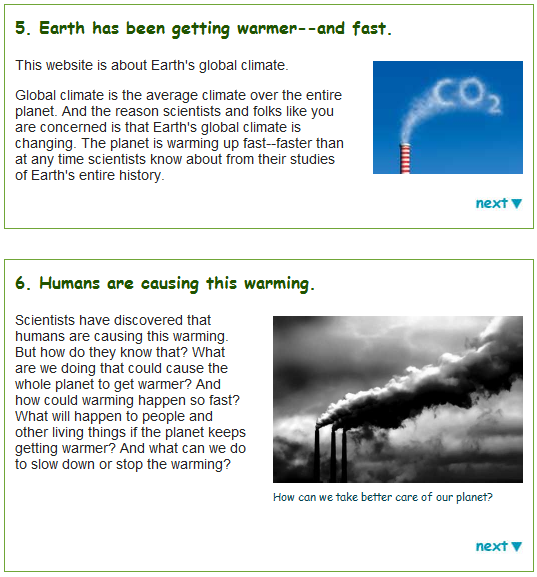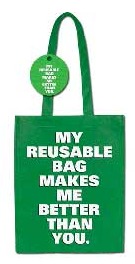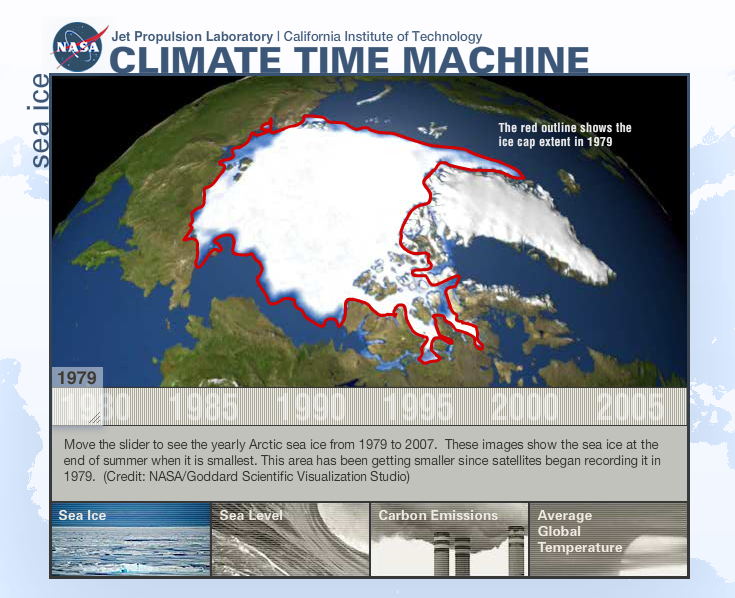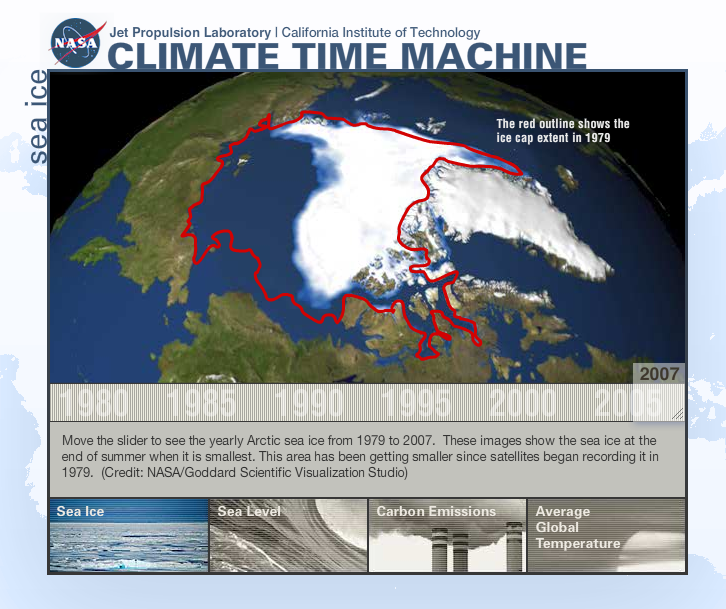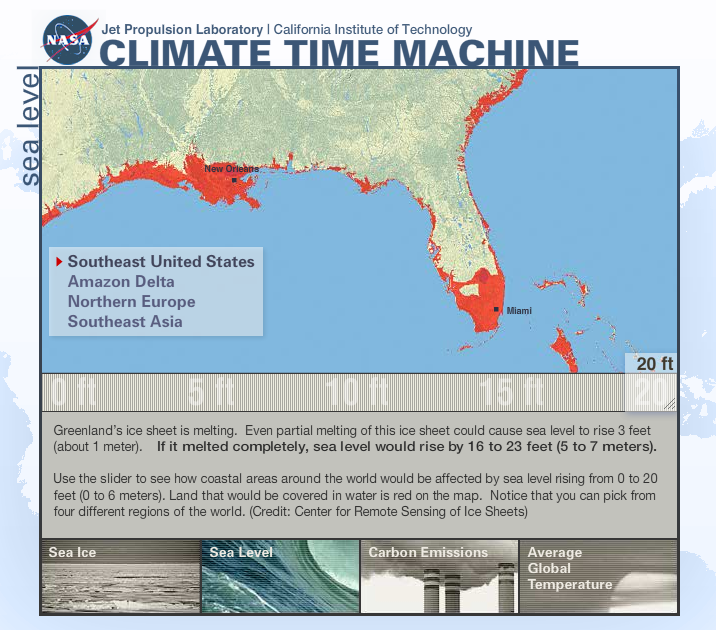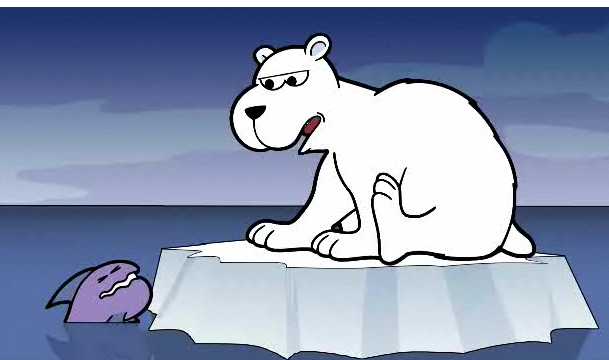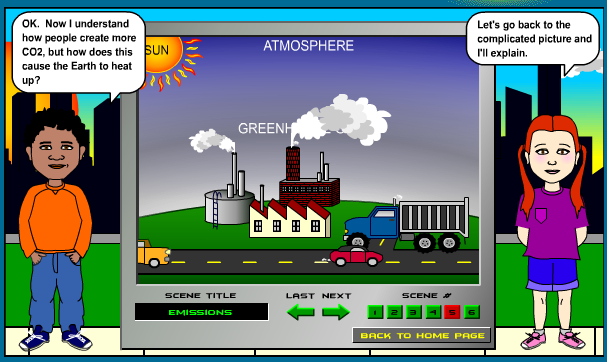NASA Targets Children with ‘Climate Kids’ Propaganda Website
The blatant propaganda being pushed on our children by the government is child abuse and a gross waste of our debt funded government spending.
By Sam Patterson at climatequotes.com
The climate is changing as it always has. Most climate scientists are unable to conceive of any natural cause for this change, and they claim that human emissions of CO2 are the cause. The evidence of increasing temperature is abundant, the evidence that human emissions are causing this increase is weak. Climate scientists rely on modeling to support their claims. These models are incomplete and inaccurate, but they claim that if you take the average of these incomplete and inaccurate models you will get the correct climate sensitivity. Even then, when you apply this sensitivity to the past it does not work. Unless of course, you factor in aerosols, which is essentially guesswork. Bottom line is this: the reasons behind the changing climate are not well understood (by anyone).
You don’t get that impression from NASA’s ‘Climate Kids‘ website. I told myself I wouldn’t use the word propaganda in this post, but the website is so one-sided and it is so obviously designed to appeal to emotion I don’t know what else to call it. Go ahead and visit before I describe it and see if you agree. I’ll wait.
Alright. In this post I will give you a tour of their site, hitting all the main sections. This is quite a long post with lots of pictures and one video, so take your time reading this one. Let’s first take a look at their ‘Big Questions‘ section. The first big question is What does “global climate change” mean? In the answer, the following two points appear:
These are obviously two very contentious points with only one side presented. First, they claim that:
The planet is warming up fast–faster than at any time scientists know about from their studies of Earth’s entire history.
This is flatly untrue. Remember this graphic from the BBC Phil Jones interview?
The trend of recent warming is practically identical to two previous trends. Their second claim, “Humans are causing this warming” is made without bothering to allude to any uncertainty. Even the IPCC only gives a 90% and says ‘very likely’. Saying “It is very likely that humans are causing this warming” at least lets the little tykes know it isn’t an absolute scientific fact (because it isn’t).
The rest of the big questions section is similar. They address issues like sea level rise, the greenhouse effect, the effects on wildlife (including a picture of a polar bear on a lone iceberg), ocean acidification, and of course a section entitled “What can we do to help?”. In this section, children are urged to plant trees (showing a picture of Michelle Obama doing just that), get new CFL lightbulbs, unplug electronics, turn down the thermostat, ride bikes, shop thrift stores, save water, and more. They also recommend children ask their parents to buy a reusable shopping bag, accompanied by this picture:
Way to go NASA, you’re creating little eco-snobs. That section ends with the question, “How can I make a real difference?”, as if they realize even children know that replacing lightbulbs won’t help the planet. Their answer?
You can choose a “green career.” You can help to solve climate change problems and challenges. These are the exciting careers of the future. They range from designing satellites for NASA to fixing wind-energy generators to planning drought-tolerant landscapes for homes and parks. Many of the possible careers haven’t even been thought of yet. You could invent your own career! Check out our Green Careers section.
I’ll talk about their Green Careers section later. Just remember, in NASA’s eyes if a child wants to make a real difference, they will choose a green career.
Enough with the question and answers. Children are visual, so let’s look at some of the things children will see in their visit to NASA’s Climate Kids site. One program is called the Climate Time Machine. In this program you are invited to use a sliding tool to view different images on different subjects. The first option is viewing Arctic sea ice. The first picture is of sea ice in 1979:
If you slide the bar all the way, the last picture it displays is – not surprisingly – 2007:
Of course Arctic sea ice was at its lowest in 2007, and made significant gains in the following years. But that isn’t mentioned anywhere on the website. It also isn’t mentioned that Arctic sea ice has been sparse in the past. This site was launched early in 2010, so the designers of this ‘time machine’ would certainly have had the 2008 and probably 2009 pictures available yet they are not included. I’ve e-mailed NASA for the answer to this question.
Also, there is no mention of Antarctic sea ice, which has grow above average for quite some time. The sea ice isn’t the only visual meant to impact children. They also have a section on sea level rise. Take a look what happens when you slide the bar all the way on this section:
This is the height of mis-information and scare tactics combined. Look at their text below this picture (bold is theirs):
Greenland’s ice sheet is melting. Even partial melting of this ice sheet could cause sea level to rise 3 feet (about 1 meter). If it melted completely, sea level would rise by 16 to 23 feet (5 to 7 meters).
There is absolutely no indication of how likely this is to happen, there is no time scale given as to when this might happen, there is simply a scary graphic with scary numbers. No credible scientist is expecting Greenland’s ice sheet to melt completely, at least not for several centuries, and even those predictions are dependent on significant warming and very positive feedback. In all likelihood, this ice sheet will remain for millennia. There is no justification for scaring children like this. What about the poor kid who lives in Miami or New Orleans? You can bet he or she is looking for a green career right now.
So far this site isn’t much fun for kids. Let’s get to the entertainment! The following video did not have an embed function, so you will need to follow the link and watch it. It’s called “Climate Tales” and is the story of a poor polar bear floating on a lone iceberg trying to figure out his way home. He then meets a monkey in the rain forest, who cheerfully informs him that the humans have cut down the forest and burned it (leaving lots of plastic bottles in their wake). I’m not kidding, click on the picture to watch it. It’s about 4:00 long.
Honestly the whole thing doesn’t make sense. It just seems to be a way to throw in some environmentalist concerns into a kids video.
The same is true of the games section. There are a series of boring flash games which simply incorporate environmental themes. For example, there is a “Go Green!” game in which you try to get from one place to another without creating too much pollution. There is also a “Power up!” game where you need to use wind and solar energy to supply a town with electricity. These appear to be token games for a kid’s site, as I can’t imagine any kids playing these games more than once.
Another section of the site is called “Earth Now“. It’s their news section. They have articles such as this:
Does harsh winter mean end of global warming?
Brrrrr! This has been a very cold winter in many parts of the U.S. So, what’s up with that? Is global warming slowing down? Or going backwards? We wish that were true! But no…
Or this:
Who is helping? People who live in tiny houses
Why do people want to live in such a small space? There are many reasons:
* They are inexpensive to build.
* They are inexpensive to maintain.
* Utility bills (electricity, water, heating gas or oil) are tiny.
* They are quick and easy to clean.
* They are very efficient—everything is within reach.
* They make a tiny carbon footprint compared to regular-sized houses.
Or this:
Climate change makes sheep shrink and marmots get fat
…So not only are the marmots getting fatter, but there are lots more of them. However, as their environment continues to warm, summer drought will dry up the food before the marmots are ready to hibernate again. Then, the earlier spring and longer summer will not help them at all.
The news section is predictably one sided, just like the rest of the site. The last section directed at children (perhaps teenagers in this case) is the Green Careers section. This section takes a look at five ‘green careers’ and conducts short interviews with those five people. The five careers are Recycling Program Educator, Water-wise Landscaper, Renewable Energy Scientist, Home Energy Auditor, and “Green” General Contractor. Let’s take a look at some excerpts. First, the water-wise landscaper:
CK:
We have had a drought in Southern California for several years. But that’s just temporary, right?
Michelle:
Not in the long run. Earth’s climate is getting warmer, so drought will probably become much more common and severe! For many regions, global warming means less snowfall in the winter, so less water in lakes and reservoirs.
I’m sure if they interviewed Michelle now, she would be touting how flooding will become a more common problem and more severe. And the whole ‘less snowfall in the winter’, well, let’s forget about that. Now the Home Energy Auditor:
CK:
Can we really help slow down climate change just by reducing our use of electricity?
Mauricio:
Yes. Most of the electricity in the U.S. is generated by burning fossil fuels such as coal and gas, which are the main causes of climate change. By reducing electricity use, you are helping to slow down climate change and saving money.
CK:
Thanks, Mauricio. Good tips for us. We need more people doing what you are doing to make us all more aware of how we can help slow down climate change.
Thanks, Mauricio, for giving us no context whatsoever. Reducing energy use is not going to have any noticeable impact on the climate. Not even the most ardent alarmist would claim that making a home more energy efficient will actually have a noticeable impact on the earth’s temperature (unless coupled with other massive changes).
There is one more section on the site. This isn’t geared towards children, but educators. It is called Educator Resources. It’s just a series of links for teachers to find more information on climate change. For example, you can link to the EPA site where you would find their educational program geared towards children:
Oh dear. The EPA has a similar program to NASA’s.
There is an obvious question to be asked here. Why do we need federal agencies to create programs which educate children about climate change? Even if we ignore that question and accept the role of federal agencies as educators, we still are left with a completely one-sided presentation. There is no mention in the NASA site of uncertainties. There is practically no timescale presented to give context. The site urges children to pick certain ‘green’ careers over others. The positives of renewable energy are praised, with no mention of the drawbacks. Whether or not you believe this site should even exist (with taxpayer funding), certainly we can all agree the issues presented need to be balanced. There is no balance on the NASA Climate Kids website. I’d wager that if all references to NASA were removed, the site would be indistinguishable from an environmentalist site.
NASA, can’t you find something better to do with our money?
Sam Patterson at climatequotes.com Used by permission.
Help Make A Difference By Sharing These Articles On Facebook, Twitter And Elsewhere:

